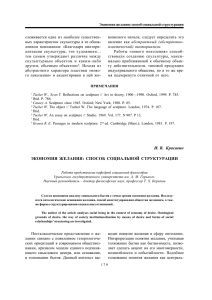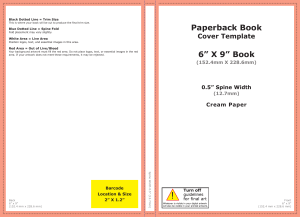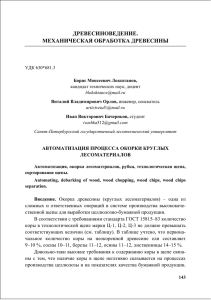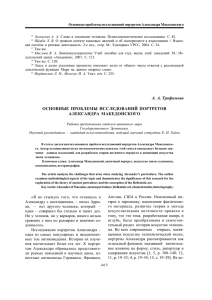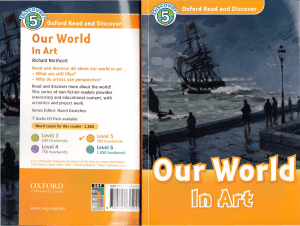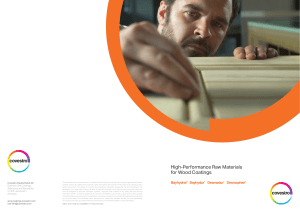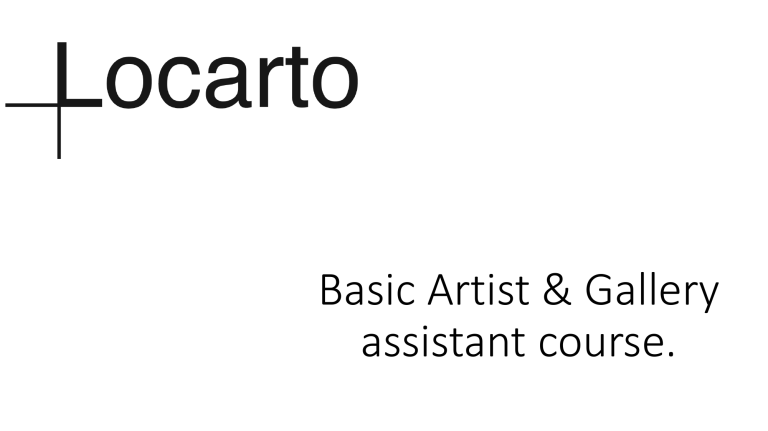
Basic Artist & Gallery assistant course. Locarto assistant tutorial Alongside this tutorial you are expected to read and keep the Oxford concise dictionary of art terms. Congratulations on your decision to become a certified Locarto assistant. You are embarking on an exciting journey, where you have the opportunity to learn a lot about one of the world´s most lavish markets and talk to some very interesting people. Moreover, you will also add something to the greater good. Your use of the Locarto system will, minute by minute, energise the art world and release the artistry of its creators. Art has never been organised like this before. As a Locarto assistant, you will serve artists, curators, collectors and galleries. Your service to them is important and valuable. To be able to do this work you have to speak the language of the art world. This tutorial will equip you with the basic vocabulary and understanding you will need to speak confidently and easily with the players of that world. It will also give you an overview of important legal aspects of the art business and its professional ethics. Visual art has been made as long as man has walked upright on two legs, for thousands and thousands of years. The activity of making and using art is as fundamental to human civilisation as speaking and cooking. The use of art objects and art making has changed again and again over the course of time. Today, visual art is a global phenomenon, an ongoing exchange of perspectives through millions of exhibitions, broadcasts, books and talks. At the centre of this exchange is the artwork. Your service in Locarto will revolve around the artwork and its information. Most importantly, you will manage the connections between the different pieces of information, the artworks, the exhibitions, the artists, the books and the galleries. To be able to think, we first have to remember. Without memory there is no thought. Locarto is the memory of the art world. The chapter on the different main categories of art that you will be dealing with, is meant to make you confident in your ability to identify an artwork by category and constituent parts and materials. «This is a pencil drawing on paper.» «This is a marble relief.» «This is a tapestry.» And so on. We all have pre-conceived notions of what an artwork looks like. It is likely to be a painting in a frame, Mona Lisa maybe. Or a marble statue of David. Most of the time, these are the kind of items we will be working with: framed displays to hang on walls and things stood on a table or on the floor. For the last hundred years, however, the art world has adopted a perspective that anything an artist confers the status of artwork to, is an artwork. It could be a live cockroach or a piece of industrially manufactured string. It could be ten bricks stacked in a corner. It could be a whispered sentence. Or all of the above. Your pre-conceived notions of what constitutes an artwork will most likely be challenged at some point during the course of your work, and you will struggle to make it fit the taxonomy of the Locarto system. That is ok - if you are in doubt, ask for help. Make the most of this tutorial, it is the start of a wonderful journey into the world of art. Drawing is a form of visual art in which one uses various drawing instruments to mark paper or other types of two-dimensional support. Instruments include graphite pencils, pen and ink, various kinds of paints, inked brushes, colored pencils, crayons, charcoal, chalk, pastels, various kinds of erasers, markers, styluses, and various metals (such as silverpoint). Digital drawing is the act of using a computer to draw. In addition to its fine art forms, drawing is frequently used in commercial illustration, animation and architecture. A quick, freehand drawing, usually not intended as a finished work, is sometimes called a sketch. Drawings are always unique, one-off artworks. Painting is the practice of applying paint, pigment, colour or other media to a solid surface (called the support). The medium is commonly applied to the base with a brush, but other implements, such as knives, sponges, and airbrushes, may also be used. In art, the term painting describes both the act and the result of the action. The support for paintings include such surfaces as walls, paper, canvas, wood, glass, lacquer, pottery, leaf, copper and concrete, and the painting may incorporate multiple other materials, including sand, clay, paper, plaster, gold leaf, and even whole objects. Painting is a very important category in the visual arts with a very long history. They can be figurative and representational (we can recognise figures, like a lion, a tea-cup, Napoleon) or completely abstract (colour fields, brush strokes of paint, daubs of paint), and anything in between. There is great variation in the art of painting. Photorealism Abstract Still life Expressionism Collage, from the French: coller, "to glue" or "to stick together”, is a technique of art creation by which art results from an assemblage of different forms, thus creating a new whole. A collage may sometimes include magazine and newspaper clippings, ribbons, paint, bits of colored or handmade papers, portions of other artworks or texts, photographs and other found objects, glued to a piece of paper, canvas or some other support. The origins of collage can be traced back hundreds of years, but this technique made a dramatic reappearance in the early 20th century as a novel art form. The term papier collé was coined by both Georges Braque and Pablo Picasso in the beginning of the 20th century when collage became a distinctive part of modern art. Sculpture is the branch of the visual arts that operates in three dimensions. Durable sculptural processes originally used carving (the removal of material) and modelling (the addition of material, as clay), in stone, metal, ceramics, wood and other materials but, since Modernism, there has been an almost complete freedom of materials and process. A wide variety of materials may be worked by removal such as carving, assembled by welding or modelling, or moulded or cast. Sculpture in stone survives far better than works of art in perishable materials, and often represents the majority of the surviving works (other than pottery) from ancient cultures, though conversely traditions of sculpture in wood may have vanished almost entirely. However, most ancient sculpture was brightly painted, and this has been lost. Sculpture has been central in religious devotion in many cultures, and until recent centuries large sculptures, too expensive for private individuals to create, were usually an expression of religion or politics. Those cultures whose sculptures have survived in quantities include the cultures of the ancient Mediterranean, India and China, as well as many in Central and South America and Africa. The Western tradition of sculpture began in ancient Greece, and Greece is widely seen as producing great masterpieces in the classical period. During the Middle Ages, Gothic sculpture represented the agonies and passions of the Christian faith. The revival of classical models in the Renaissance produced famous sculptures such as Michelangelo's David. Modernist sculpture moved away from traditional processes and the emphasis on the depiction of the human body, with the making of constructed sculpture, and the presentation of found objects as finished art works. Carving is the act of using tools to shape something from a material by scraping away portions of that material. The technique can be applied to any material that is solid enough to hold a form even when pieces have been removed from it, and yet soft enough for portions to be scraped away with available tools. Carving, as a means for making stone or wooden sculpture, is distinct from methods using soft and malleable materials like clay and melted glass, which may be shaped into the desired forms while soft and then harden into that form. Wood carved Sculpture by Barbara Hepworth Casting is a manufacturing process . It is a process in which a liquid material is delivered into a mould that contains a negative impression (a three-dimensional negative image) of the intended shape. The material is poured into the mould through a hollow channel. The material and mould are then set to rest until it is cool or hardened. The cast can then be extracted. Casting of artworks is most often used for making multiple complex shapes in one or more editions. Casting processes have been known for thousands of years and are widely used for sculptures. Metals like bronze, but also other materials like concrete are widely used for casting of artworks. Casted Sculpture by Henry Moore Modelling is a method to create an art object by using material that can be easily shaped. Various types of clay can be used for this process because it is easy to add where you need more material and easier to take away where you need less. Modelling can also be used in order to make the model for a shape that is later going to be casted. The most common variety of clay used in art production is ceramic clay that can later be baked at high temperatures in a process known as firing to create ceramics. The result will then be terra cotta, earthenware, stoneware, or porcelain . Modelling Bust of woman in process Assemblage is an artistic form or medium usually created on a defined substrate that consists of three-dimensional elements projecting out of or from the substrate. It is similar to collage, a twodimensional medium. It is part of the visual arts and it typically uses found objects but is not limited to these materials. This method is often used to make sculptures or reliefs. Assemblage Sculpture made by typewriter parts 3D printing Sculpture of a bust in process 3D printing, or additive manufacturing, is the construction of a three-dimensional object from a CAD model or a digital 3D model. The term "3D printing" can refer to a variety of processes in which material is deposited, joined or solidified under computer control to create a three-dimensional object with material being added together layer by layer. In the 1980s, 3D printing techniques were considered suitable only for the production of functional or aesthetic prototypes. Now the precision, repeatability, and material range of 3D printing have increased to the point that some 3D printing processes are even considered viable as an industrial production technology. One of the key advantages of 3D printing is the ability to produce very complex shapes or geometries which makes it very suitable for creating art sculptures. Relief is a sculptural technique where the sculpted elements remain attached to a solid background of the same material. The term relief is from the Latin verb relevo, to raise. To create a sculpture in relief is to give the impression that the sculpted material has been raised above the background plane. What is actually performed when a relief is cut in from a flat surface of stone or wood is a lowering of the field, leaving the un-sculpted parts seemingly raised. The technique involves considerable chiseling away of the background, which is a time-consuming exercise. Relief is less fragile and more securely fixed than a sculpture in the round, especially one of a standing figure where the ankles are a potential weak point, especially in stone. In other materials such as metal, clay, plaster stucco, ceramics or papier-mâché the form can be just added to or raised up from the background, and monumental bronze reliefs are made by casting. There are different degrees of relief depending on the degree of projection of the sculpted form from the field. The Italian and French terms are still used in English. The full range includes: High relief where more than 50% of the depth is shown and there may be undercut areas. Variations of reliefs used is Mid-relief, Low relief, Shallow-relief and Sunk relief, but the distinction between High relief and Low relief is the clearest and most important. These two are generally the only terms used to discuss most work. The opposite of relief sculpture is Counter-relief, where the form is cut into the field or background rather than rising from it. Relief – Sergo Camargo Relief – Eivind Blaker “Counter” Relief - Avantgarde “Counter” Relief - Avantgarde Prints are artworks made by printing, normally on paper. Prints are original artworks produced as multiples of the same piece. Each print is correctly referred to as an "impression or edition", NOT a "copy”. Often impressions vary considerably, whether intentionally or not. The images on most prints are created for that purpose, the print, perhaps with a preparatory study such as a drawing. A print that copies another work of art, especially a painting, is known as a "reproductive print” and is NOT regarded as an original artwork. Prints are created by transferring ink from a matrix to a sheet of paper or other material, by a variety of techniques. Common types of matrices include: metal plates, usually copper or zinc, or polymer plates and other thicker plastic sheets for engraving or etching; stone, aluminum, or polymer for lithography; blocks of wood for woodcuts and wood engravings; and linoleum for linocuts. Screens made of silk or synthetic fabrics are used for the screen printing process. Multiple impressions printed from the same matrix form an edition. Since the late 19th century, artists have generally signed individual impressions from an edition and often number the impressions to form a limited edition; the matrix is then destroyed so that no more prints can be produced. Prints may also be printed in book form, such as illustrated books or artist's books. The term artist proof is used in connection with limited edition prints. It is a common practice that an artist keeps 10-15% out of a limited print edition for his or her own use. These prints are called artist proofs or épreuve d'artiste (French). Typical abbreviations found on such prints are AP, A/P, A.P. or something like E/P or E.P. In strict terms, artist proofs are not meant to be sold in the market, at least not immediately, but this is theory. It is very often offered without reserve if the demand is there. Photography is the art, application, and practice of creating durable images by recording light, either electronically by means of an image sensor (digital), or chemically by means of a light-sensitive material such as photographic film (analogue). It is employed in many fields of science, manufacturing, and business, as well as direct uses for art, film and video production. Fine-art photography is photography created in line with the vision of the photographer as artist, using photography as a medium for creative expression. The goal of fine-art photography is to express an idea, a message, or an emotion. This stands in contrast to representational photography, such as photojournalism, which provides a documentary visual account of specific subjects and events, literally representing objective reality rather than the subjective intent of the photographer; and commercial photography, the primary focus of which is to advertise products, or services. In the fine-art photography market, photographs are usually editioned, but they can also be unique. There is great variety in the sizes and numbers of prints in editions. It is not uncommon to see three or more different sizes of a single photograph in varying numbers, say “small in an edition of 50”, “medium in an edition of 15” and “large in an edition of five”. Prices for the different editions can be fixed, say every small edition print costs USD 1 000, or they can be tiered in an escalating price scheme, where the last number in the edition is the more expensive. “Edition 1/5 in the large size costs USD 15 000, while edition 5/5 costs USD 35 000.” (see sample of editions and sizes below) The term artist proof also applies to fine art photography, see in section prints. 5 editions 10 editions 15 editions 30 editions Textile art has a long tradition and history all over the world and the practice of weaving is one of the oldest forms of human technology. The category Textile art includes all art using techniques such as weavings, embroideries, tapestries, fiber arts, carpet design, and more. Since the 1970’s artists have pushed the boundaries of what can be considered a textile as well as how a textile can be considered art. Applied art are all the art forms that apply design and decoration to everyday and essentially practical objects in order to make them aesthetically pleasing. The term is used in distinction to the fine arts, which are those that produce objects with no practical use, whose only purpose is to be beautiful or stimulate the intellect in some way. In practice, the two often overlap. Applied arts largely overlaps with decorative arts, and the modern making of applied art is usually called design. Installation art refers to an artistic genre that is characterized by the artist using various objects, that in themselves do not have to be works of art (painting, sculpture and the like), but for example can be reworked objects from everyday life, from nature or from the scrap heaps , to create a spatial composition and mix that is suitable for giving the audience art experiences with the help of the associations that the composition of the objects leads to. The objects involved in making up the installation sometimes number in the hundreds. An installation is often made especially for the relevant exhibition space, and can therefore often not easily be moved without being adapted to the new exhibition space. Installation art in various forms and with different expressions has from the 1950s - 1970s onwards been increasingly dominant in art exhibitions. Frames Paintings, photographs and prints are often fitted in frames. A picture frame is a protective and decorative edging. It makes displaying the work safer and easier and both sets the artwork apart from its surroundings and aesthetically integrates it with them. Picture frames are generally square or rectangular, though circular and oval frames are not uncommon. Frames in more unusual shapes such as football shapes, stars, hearts can be hand carved by a professional wood carver or carpenter (or possibly molded out of wood pulp). Traditionally picture frames have been made of wood, and it remains very popular because wood frames can provide strength, be shaped in a broad range of profiles, and allow a variety of surface treatments. Other materials include metals, e.g. silver, bronze, aluminum, and stiff plastics such as polystyrene. A frame surface may be of any color or texture. Both genuine gilding and imitation gold remain popular, although many other surfaces are to be found in most framing establishments. Some picture frames have elaborate molding, which may refer to the subject matter. Intricate decorations are often made of molded, then gilded plaster over a wood base. Picture frame mouldings come in a wide variety of profiles, generally in some sort of L shape with an upward "lip" and a horizontal rabbet. The rabbet functions as a shelf to hold the frame glazing (if any is to be used), some sort of spacer or mat/matte to keep the object safely behind the inner surface of the glazing, the object itself, and backing boards to protect the object from physical damage and environmental pollutants. The lip extends a proportionate distance up from the edge of the rabbet. It restrains materials in the frame and can be used to help set off or reveal the picture aesthetically. The picture frame may contain a protective "glazing" of picture framing glass or acrylic sheet, e.g. Acrylite or Plexiglas. If the art in the frame is considered dispensable or if the exhibition environment is highly controlled, no glazing may be used. Since the 1980s significant advances have been made in the manufacture of picture glazings, creating a much broader range of options in both glass and acrylic products. Choosing which to use requires taking into account a variety of each object's characteristics: size, media used, condition of media, perceived value of object, anticipated use of the object, e.g. extended exhibition periods or travel. Now, both picture framing glass and acrylic sheet are available with anti-reflective coatings to make the glazing virtually invisible under most lighting conditions. The glazing can incorporate a filter to block almost all ultraviolet radiation (a UV filter) from penetrating the glazing. This filter slows the photocatalytic degradation of organic materials in the picture. Both glass and acrylic glazings are available with built-in anti-static properties. This option is necessary for objects with friable or degraded media, which would be pulled off the object and onto the glazing by static electric forces. Except for the most disposable or temporary displays, the glazing must be held off the surface of the picture in order to prevent the object from becoming adhered to the underside of the glazing, acquiring irreversible color changes due to compression of the media, and/or developing mold growths that otherwise would not occur. This distancing is accomplished with a mat, "spacers" tucked behind the glazing and hidden from view by the lip of the moulding, shadowboxing, sandwiching the glazing between two mouldings, and similar methods. Relieving the glazing is also necessary in order to prevent loose media, such as charcoal or pastel, from becoming smudged. A passe-partout (or mat) can be put between the frame and picture. The passe-partout serves two purposes: first, to prevent the image from touching the glass, and second, to frame the image and enhance its visual appeal. The treatment of the back of the framed artwork also varies widely. Most frames incorporate some sort of stiff, dense board on the back to protect against physical blows and the ingress of dirt, insects, moisture, and pollutants. The backboard is usually made from good archival-quality material, such as matboard. Archival-quality corrugated boards, both paper and plastic, are sometimes used, and foam-core boards that are described as being archival quality are also used. Behind the backing board, retaining clips or brads hold the package in place, mirroring the restraint provided by the lip of the moulding at the front of the frame. A dust seal (usually sturdy archival-quality paper) is adhered over the back of the moulding. While these are almost invariably simply functional, there are examples of works in which they have been decorated and considered part of the artwork. Finally, hanging loops or similar attachments are securely screwed in, usually to the left and right sides of the molding. "L"-style frames are a very common, simple variety that are constructed with a single L-shaped border of wood, with the bottom part of the L, or rabbet, at the front of the frame to hold in the glass, object and backing, which are secured in from the back. Legal matters Confidentiality Discretion is the most important trait of anyone working in the art world. Working as a Locarto certified assistant, you will always and everywhere be subject to one-way confidentiality. This means that any information you get from the Locarto client, in the system, in written or verbal form – jpg-images, resumes, anything – is confidential and you may not pass it on in any way, shape or form. This information is secret. If you get stuck and need help using the system, you can ask the client to explain in more detail. If you need help from the Locarto team, you may not share any of the client’s information, not even the client’s name. You have to ask for help in general, technical terms. Breach of this clause in your contract is illegal and will bring a variety of sanctions on you, including, but not limited to, financial damages. Intellectual property rights In most of the developed world, intellectual property rights are enshrined in law. You have to familiarise yourself with what this means. Patents are the most well known form of such rights. However, an artwork is also intellectual property. This means that it is illegal to spread or use the likeness, as an image, of an artwork, without the consent of the artist. In practice, this means for example that it is illegal to take a picture of an artwork and then use that picture to make a label for a wine bottle. It is also illegal to photograph or film an artwork and then use the resulting images in an advertisement for vacation travel. Key here is the wording «fair use». It is not illegal to take a picture of an artwork and put it in your own photo album, or to photograph it and put it in a newspaper as part of relevant news reporting, if you are a journalist. It is, however, illegal to put it in a book without the consent of the artist. If your intent is to make money with the image, chances are it is illegal to do it without the consent of the artist. Several organisations organise the consents of artists, the most well-known in Europe is VG Bild-Kunst in Germany. Artists that are members of this organisation have granted image reproduction rights within a pre-defined matrix to anyone who pays the prescribed fee. Clients can then use images of artworks in books, magazines, web pages etc. A specific thing such as a wine label is usually agreed with the artist directly. There are of course limits to intellectual property rights when it comes to art, and the main factor is time. 70 years after the artists´s death is the usual limit. After this time has passed, all artworks by the artist are considered free to use. This means you can take a photo of a painting by Rembrandt and put it on a wine bottle without asking for permission from the artist´s estate, since more than 70 years have passed. However many museums restrict the publics opportunity to photograph the artworks within the museum, just for this reason. They want the photos for themselves.
